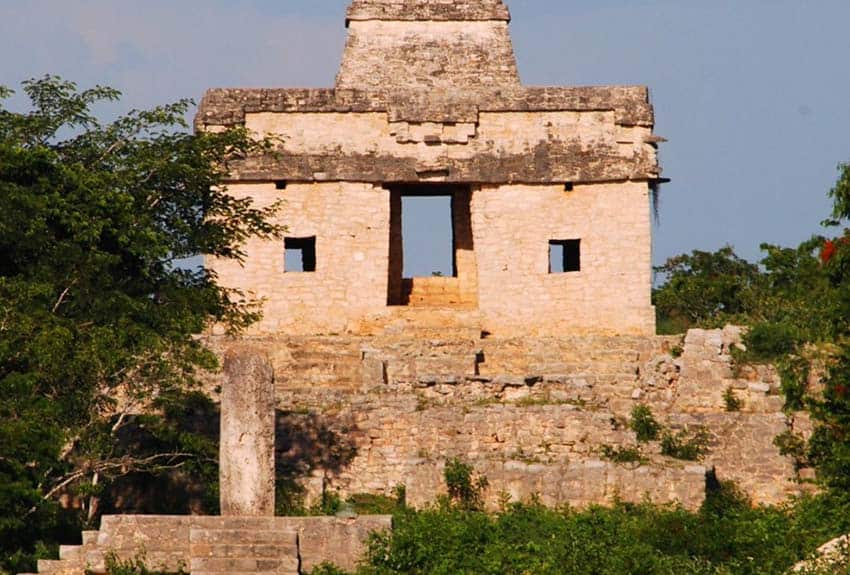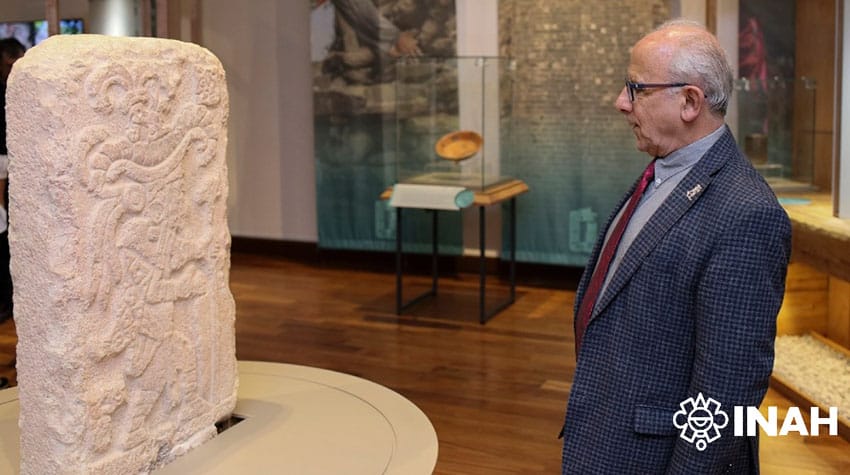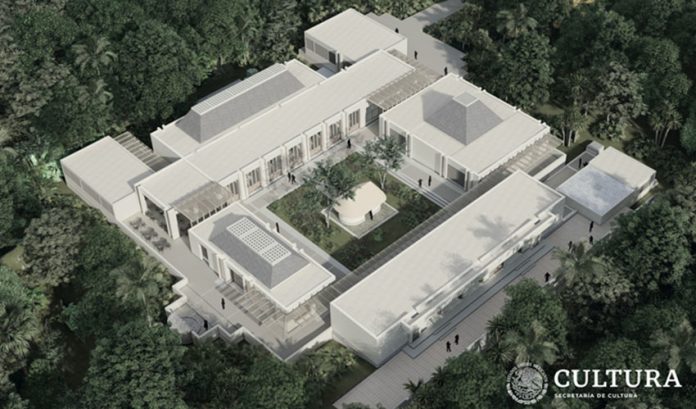A selection of “extraordinary pieces” found during archaeological rescue work on the Maya Train route will be displayed in museums in Yucatán, one which will be a renovation and another that broke ground Wednesday.
The first stone of the Puuc Archaeological Museum was laid on Wednesday, marking the beginning of construction on a cultural center that will eventually cover 4,800 square meters, in the Kabah archaeological zone south of Mérida.

The museum will house around 360 artifacts recovered from Section 3 of the Maya Train route, on display for the first time. It will also be a space for cultural activities and presentations.
“We are making a museum in an area where there has been no investment of this nature in cultural, academic and scientific subjects over the years,” said Arturo Chab Cárdenas, head of the Yucatán delegation of the National Institute of Anthropology and History (INAH).
“The construction of the museum will settle a historic debt in the area.”
He said that local Mayan communities had been consulted on the development of the museum, which will be inaugurated in December this year.

At President López Obrador’s Monday morning press conference, INAH general director Diego Prieto Hernández announced that another museum, in the Dzibilchaltún archeological zone just north of Mérida, is currently under restoration.
“[This will] incorporate, through a new museography discourse, the most recent research on what is considered one of the largest known sets of pre-Columbian ruins, a center of importance from before our era until the time of the Spanish conquest,” Prieto Hernández said.
He added that conservation work is underway on Dzibilchaltún’s Temple of the Seven Dolls, a Mayan complex from around A.D. 750. This is supported by the Program for the Improvement of Archaeological Zones (Promeza) — a program designed to improve infrastructure at archaeological sites that are expected to receive an increase in tourism once the Maya Train is operational.
Around 85% to 90% of the artifacts recovered from Section 3 of the Maya Train route — which runs from Calkiní, Campeche, to Izamal, Yucatán, have now been classified, he said.

Prieto Hernández also described how more than 30 engineering adjustments have been made to the Maya Train to protect archeological sites along the route, including “verticalizing” a slope cut for a bridge in Tenosique, Tabasco, near an ancient Mayan settlement.
Care has been taken to protect cave systems and cenotes, he added, explaining that a cable bridge is being constructed through one cave system near the Paamul II site to give access to tourists.
The Maya Train has previously come under intense criticism from environmentalists, who fear the impact that the infrastructure and increased tourism will have on the region’s fragile ecosystems, communities and geological formations.
With reports from La Jornada Maya and Diario de Yucatán
